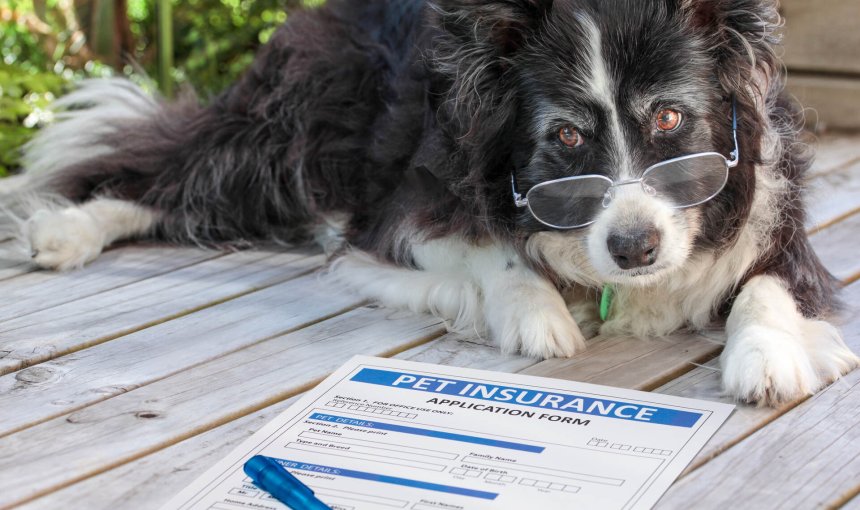Types Of Pet Insurance: Which Is Right For You?
Confused about pet insurance plans? Let's clear things up! Here are the main types of pet insurance - and how to pick what's best for you & your buddy.

Pet insurance is a great tool for pet parents who want to minimize risk, manage their budget, plus ensure their furry friend’s wellbeing. But have you ever considered that there are different types of pet insurance? How do these work and what’s the best fit for you and your buddy? And let’s admit it – understanding how pet insurance works and the different types of coverage can be a challenge. But not to worry – it’s not so difficult after all! In this post you’ll learn about the three main kinds of pet insurance, plus what to consider when choosing a plan that works for you. Let’s get started.

Find out where your cat spends their time.
Read moreWhat are the main types of pet insurance?
In a nutshell, the main types of pet insurance are:
- Lifetime
- Time-limited
- Accident-only
So let’s start with…
Lifetime pet insurance
(Also known as Lifelong, Renewable Benefit, Reinstatement, Cover for Life, or Repopulating policies)
Lifetime pet insurance plans are the most popular and offer the most comprehensive coverage for your pet. They typically cover both accidents (injuries) and illness, every year for as long as you renew the policy. This means, if your pet develops a condition after the insurance policy has started, this condition will continue to be covered for the pet’s life – within policy terms set.
However, because of their extensive coverage, lifetime pet insurance plans can be more expensive. As the name implies, you can claim anytime throughout your pet’s life, subject to the terms and limits of the plan.
What does lifetime pet insurance cover?
Lifetime pet insurance typically covers:
- Veterinary treatment for illness and injuries
- Lifelong or chronic conditions
- Death, loss or theft of your pet
- Dental injury or illness
- Third party liability (dogs)
Read more: Dognapping: Pet Kidnapping And How To Keep Your Dog Safe From Dog Thieves
Who is lifetime pet insurance good for?
Lifetime pet insurance may be a good option for you if you:
- Want to get the best possible coverage for your pet
- Have a young dog or cat and want to insure them for their whole life
- Have a pet who may likely develop breed-related conditions
- …want peace of mind
Types of lifetime pet insurance plans
Before you get started, keep in mind that there are different types of lifetime pet insurance plans.
- Annual lifetime insurance policies have a maximum limit on how much they’ll cover over the course of a year.
- Per-condition plans have a limit on how much they’ll pay for each condition, usually within a certain time frame.
Once the limit has been reached, you won’t be covered for any additional claims until the plan is renewed. At which point, you’ll be entitled to the full amount of cover again. Plus, in general: the higher the payout limit(s), the more expensive the plan tends to be.
Overall, lifetime pet insurance policies are a great choice for pet parents who want to enjoy fuller coverage for peace of mind.
Time-limited pet insurance
A time limited pet insurance policy provides you with coverage up to a certain amount, within a limited amount of time, usually 12 months. After this time has been reached, it will be up to you to pay for any additional treatment out of pocket. Usually, time limited pet insurance policies are the cheapest plans available that still offer both accident and illness cover.
What does time-limited pet insurance cover?
- Vet expenses for illness and injuries
- Death, euthanasia
- Loss or theft
- Third party liability (dogs)
Who is time-limited pet insurance good for?
Time limited pet insurance policies are ideal for anyone looking for an affordable way to cover short term illness and injuries. But with this kind of pet insurance, it does get hard to find cover once your pet gets older.
Accident only pet insurance
This type of pet insurance policy only covers accident-related expenses, up to a fixed amount. So, if your dog is hit by a car, or if your cat is attacked by a dog, you’d be covered. Accident-only coverage usually has lower monthly costs, but still provides coverage when you need it the most. It won’t cover illness, however. Often, this is the only type of coverage available for senior pets.
What does accident-only pet insurance cover?
- Accidental injuries that result from a single incident, for example a bone fracture
- Some policies may also include an amount to help cover the cost of an emergency treatment for illness
Who is accident only pet insurance good for?
Accident only pet insurance is good for anyone who has:
- A young, healthy pet that’s less likely to need veterinary care
- A pet that’s more likely to be injured in an accident than become ill
- An older pet who is not eligible for other types of coverage due to policy age limits
Some accidental only pet insurance policies are limited to, for example, 12 months. If coverage is time-limited, you’ll need to renew your policy to ensure your pet is covered against accidents in the next year.
How to pick from the different types of pet insurance
So when shopping for pet insurance, keep these factors in mind:
- Your pet’s age: As your pet ages, pet insurance generally becomes more expensive. So it’s best to insure them from a young age. Some providers don’t cover pets over a certain age limit.
- Your pet’s breed: Some providers restrict coverage for certain breeds that are more likely to develop illnesses. Pedigree pets are also usually more expensive to cover than mixed breeds.
- Pre-existing conditions: Most plans don’t cover illnesses or injuries that your pet has previously been treated for, so it’s best to insure your pet from a young age.
- The type and number of pets you want to insure: The cost of your plan will be affected by which kind of pet you have as well as the number of pets you insure. Dogs are generally more expensive to insure than cats.
- How much coverage you want: You can choose accident-only, time-limited or comprehensive lifetime cover.
- Your budget: How much can you afford to pay for your premium per month? But don’t forget, how much could you afford to pay out of pocket for unexpected vet fees?
- Additional benefits: Compare policies for additional benefits that may be useful for you – for example member discounts, live chat, vet video calls and more.
- Waiting periods: Many pet insurance policies have waiting periods, or an amount of time you have to wait from the date your policy states until coverage kicks in. Keep this in mind if your pet needs urgent treatment – some incidents may not be covered in the first few days or weeks, depending on the plan.
Wrapping up: The different types of pet insurance & what’s best for you
Picking a pet insurance plan can seem like a chore – but it can make all the difference in ensuring your buddy’s living their best, happiest, healthiest life by your side. So here’s a quick summary of the three main types of pet insurance – and how to pick what works best for you.
| Lifetime pet insurance | Time-limited pet insurance | Accident-only pet insurance |
| Most popular, comprehensive | Provides coverage up to a certain amount within a limited time period | Covers accident-related expenses up to a fixed amount |
| Cover both accidents & illnesses | Cover short-term illnesses & injuries | Accidents only |
| Can be more expensive | More affordable | Lower monthly costs |
| Works best if you want the best possible coverage for your pet | Works best for younger pets – not senior dogs or cats | Possibly the only type of coverage for senior pets |
Read more: Benefits Of Pet Insurance: Is It Worth The Investment?

This post was written by Frank Speight, a veteran of the insurance industry, who’s worked in financial services for more than 30 years across Europe and Asia. Besides negotiating the best possible insurance products for pet parents, he’s also dad to two Golden Retrievers – who have a larger following on Instagram than him!
When he’s not busy with Tractive, you can find him walking his dogs on the beach, managing their social media accounts, or playing the guitar.



